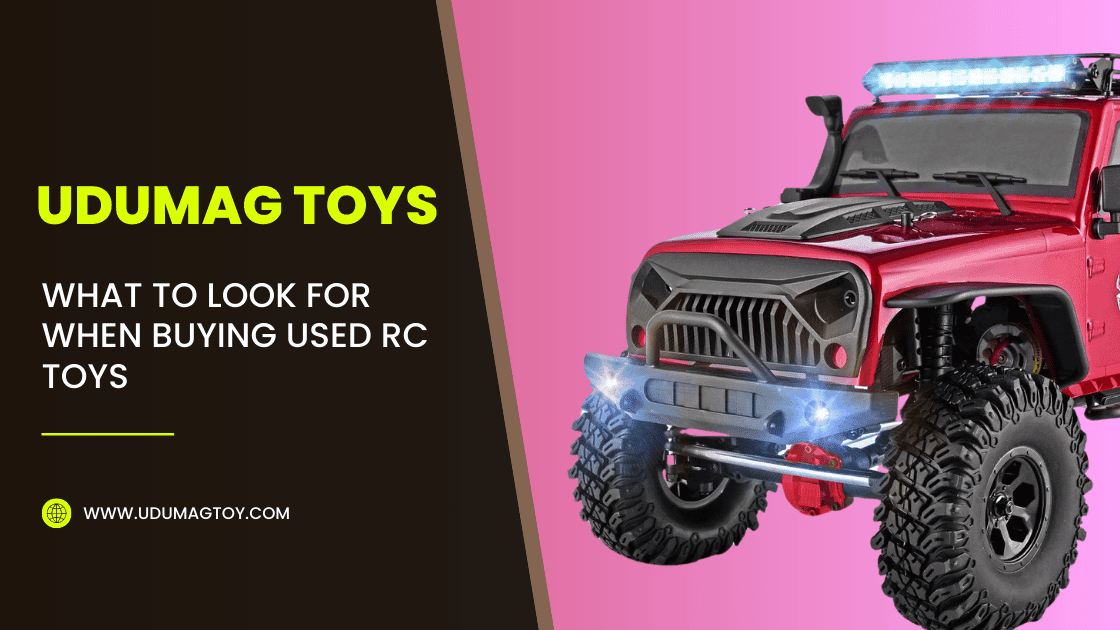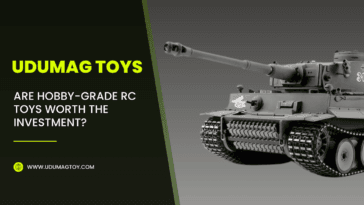The world of remote-controlled (RC) toys has captivated countless enthusiasts, from kids to adults. A staggering 25% of families in the U.S. own at least one RC toy, highlighting its popularity. As the excitement of these gadgets grows, so does the market for used options, making it a perfect zone for savvy shoppers. Buying used RC toys brings not just cost savings, but also a chance to be eco-friendly by reusing items. This guide will help you navigate the key aspects to consider when purchasing a used RC toy to ensure you get the best value for your money.
Inspecting the RC Body and Chassis
Assessing for Damage
Before making a purchase, inspect the body of the RC toy thoroughly. Look for any cracks, scratches, or broken parts. These signs of wear can affect its longevity. Pay attention to:
- Cracks: Often found near joints or hinges.
- Scratches: Common on the surface, which may indicate rough handling.
- Previous Repairs: Look for signs of glue or mismatched colors that suggest the toy has seen repairs.
Evaluating the Chassis
Examine the chassis closely, as this is the backbone of the RC toy. Keep an eye out for:
- Bends or Cracks: These can severely affect performance.
- Missing Screws: Ensure all screws and fasteners are present to maintain structural integrity.
Checking for Modifications
Some owners might modify their RC toys for better performance. While some changes can enhance functionality, others may harm resale value. Examples include:
- Positive Modifications: Upgraded motors or additional features like LED lights can add value.
- Negative Modifications: Poorly done customizations that affect stability or control should be avoided.
Examining the Electronics
Testing the Transmitter and Receiver
Testing the connection between the transmitter and receiver is crucial. To do this, follow these steps:
- Turn On: Power up both the transmitter and the RC toy.
- Check Connection: Ensure the toy responds to commands.
- Test Range: Walk away while operating to see the distance it functions reliably.
If you encounter problems, double-check batteries and possible signal interference.
Inspecting the Motor and ESC
The motor and electronic speed controller (ESC) are key components. Look for:
- Overheating Signs: Discoloration or burnt marks indicate damage.
- Wear and Tear: Check the motor and ESC connections for any fraying or loose wires.
Checking Battery and Charger
Batteries can be a significant expense. To ensure compatibility and functionality:
- Identify Battery Type: Look for labels specifying battery type and capacity.
- Charger Compatibility: Make sure the charger suits the battery type you purchase.
- Safety Tips: Always handle batteries with care to prevent accidents.
Assessing the Functionality and Performance
Testing Drive Train Components
Ensure the drive train components are in good working order. To do this:
- Inspect Gears: Ensure they engage smoothly without any grinding sounds.
- Check Axles: Rotate them to see if they spin freely.
- Examine Wheels: Ensure the wheels turn without obstruction.
Evaluating Steering and Suspension
Next, check the steering and suspension systems. This can help gauge responsiveness:
- Steering Test: Turn the steering wheel or control stick to see how quickly the toy responds.
- Suspension Check: Press down on the chassis to feel if the suspension absorbs shocks properly.
Performing a Test Drive
A test drive is the ultimate way to assess performance. Find a clean, open area and:
- Look for Performance: Does it accelerate smoothly?
- Check Responsiveness: Are steering and braking effective?
- Control Stability: Ensure it handles well without veering off.
Understanding the Specific RC Toy Model
Researching the Model’s History
Before buying, research the specific model. Check online communities, forums, and manufacturer websites for valuable insights about its performance and known issues.
Checking for Spare Parts Availability
Ensure that spare parts are easy to find for the model you’re interested in. Limited availability can lead to high repair costs in the future, making the purchase less appealing.
Evaluating the Model’s Reputation
Look for reviews and feedback from current users to assess the overall reputation of the model.
- User Experiences: Real-life experiences can uncover potential flaws or highlight advantages not documented in specifications.
Negotiating Price and Making a Purchase
Researching Market Value
Know the fair price for similar used RC toys by checking online marketplaces, local listings, and auction sites. Understanding the typical price range will help you negotiate better.
Negotiating with the Seller
When negotiating, be cordial yet firm. Use your research to back up your points, and don’t hesitate to walk away if the price isn’t right.
Completing the Transaction
Always request proof of purchase. This is important for warranty purposes, should you require repairs or adjustments after your purchase.
Conclusion
When diving into the world of used RC toys, thorough inspections and testing are essential to ensure you get a quality product. Keep an eye on the body, chassis, electronics, and overall functionality. With careful consideration and a bit of research, you can enjoy the thrills of RC hobbies without breaking the bank. Share your own buying experiences and tips in the comments — your input could help others make informed decisions!





 No products in the cart.
No products in the cart.